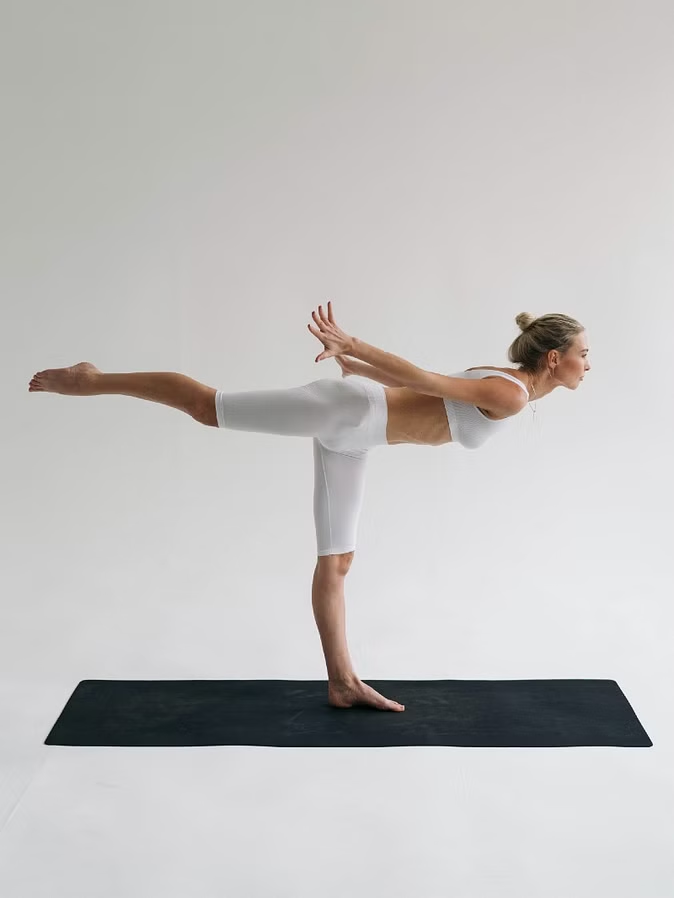The habit of practicing yoga is beneficial for you in improving balance along with promoting the overall strength of the body. Virabhadrasana is also called Warrior Pose, a regular practice that can give many health benefits to the body. This yoga is considered very effective for keeping both physical and mental health fit.

The practice of Virabhadrasana is difficult and should be done with caution. In such a situation, it should be practiced only after training from an expert. In the next slides, you will be told about the types of Virabhadrasana yoga, its health benefits, and the right way to practice.
Types of Virabhadrasana
There are five types of asanas in Virabhadrasana. First Virabhadrasana 1, in which the front ankle has to be bent and the hip has to be raised upwards.
Second Virabhadrasana 2, in which the front ankle or knee has to be bent the hip has to be turned to the side and the arms have to be kept parallel.
Third Virabhadrasana 3, in this yoga posture, while balancing on one leg, stand straight and raise the other leg while keeping the hands forward.
Baddha Virabhadrasana, in this, the torso should be bent forward while keeping the legs like in Virabhadrasana 2 and the arms should be behind.
Vipreet Virabhadrasana, in this also the position of the legs should be like Virabhadrasana 2 and the hands and torso should be taken back towards the straight leg.
Benefits of practicing Virabhadrasana
Practicing Virabhadrasana yoga provides physical, mental, and emotional benefits.
Virabhadrasana helps strengthen the muscles.
This yoga is to strengthen the shoulders, arms, legs, ankles and back.
It helps open the hips, chest, and lungs.
Improves balance, stability, and concentration of mind in the body.
It helps keep the digestive problem right by stimulating the abdominal organs.
Virabhadrasana is effective in increasing blood circulation.
You can practice Virabhadrasana regularly to increase confidence and concentration.

The right way to practice Virabhadrasana
To practice Virabhadrasana 1, stand in Tadasana posture. Stand with feet hip-width apart and keep hands at your sides.
Inhale deeply and evenly while organizing your thoughts and turn to the left.
Exhale and spread both legs keeping a distance of about 4 to 5 feet between them.
Now bend the right foot at 90 degrees and pull the left foot inwards at an angle of 45 degrees.
Align the back foot with the heel of the next foot. Put the weight of the body on the left heel, then bend the right knee on the right ankle and exhale.
Now stretch the arms towards the sky while taking them above the head. Join both the palms together and make a Pranam mudra.
Keep your head upwards and keep your eyes fixed on the sky. Stay in this posture for 30 to 60 seconds.
Now come back to the first position and repeat the entire process with the other leg.
Precautions while practicing Virabhadrasana
Initially, this asana should be done under the supervision of a trainer.
Till the time the body gets used to practicing this asana and the flexibility reaches that level, do not do this asana with too much pressure.
If you have knee problems, avoid staying in this yoga posture for a long time.
If you have heart problems or have undergone any heart surgery, then you should not stand in any standing pose for a long time.
This asana should be done only in the morning. If you are practicing Virabhadrasana in the evening, then have your meal at least 4-6 hours before.
If there is pain in the shoulder or neck, then this asana should not be done.
If there is knee pain or arthritis, then practice with the support of a wall.
(PC: ISTOCK)










